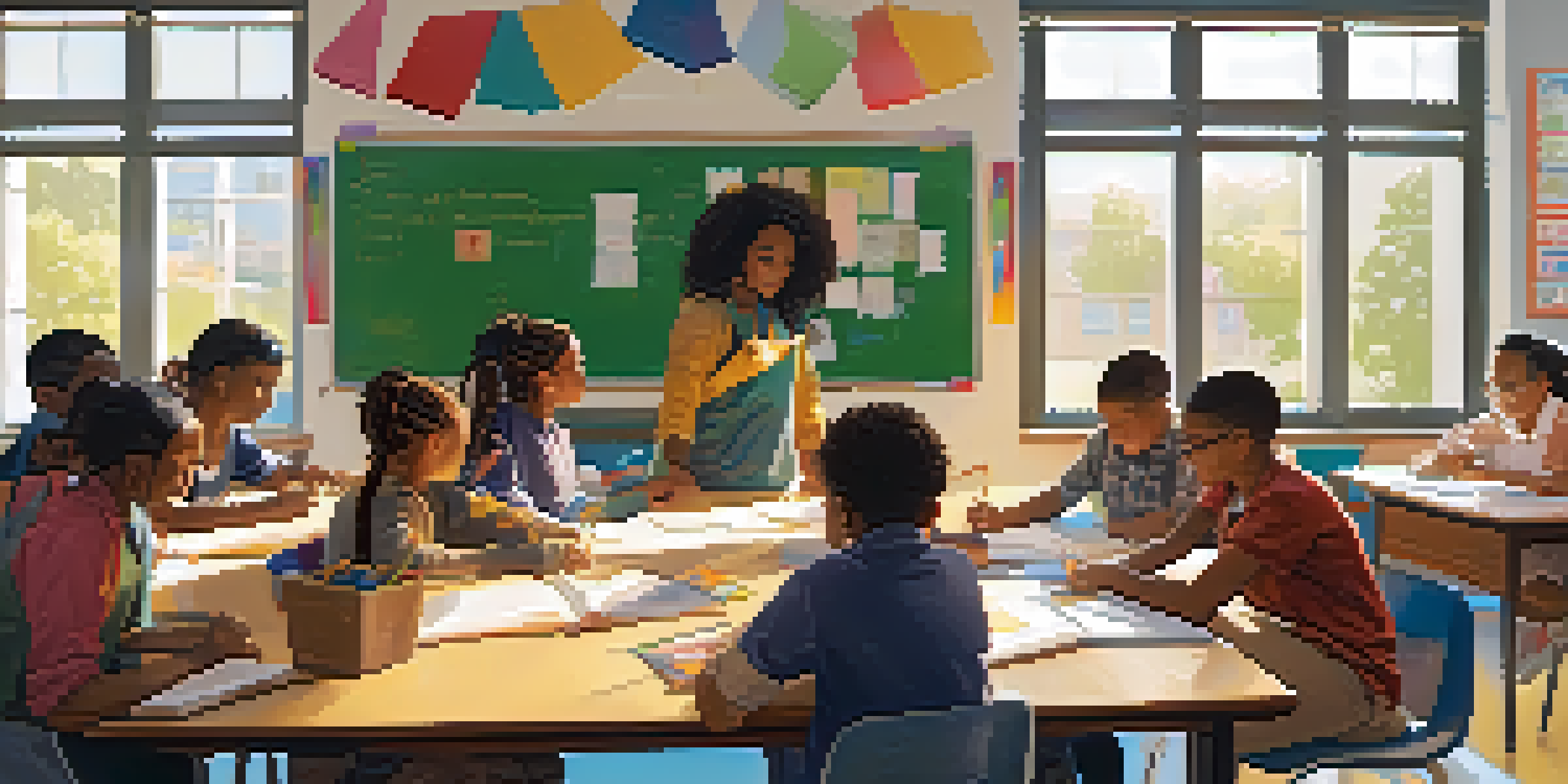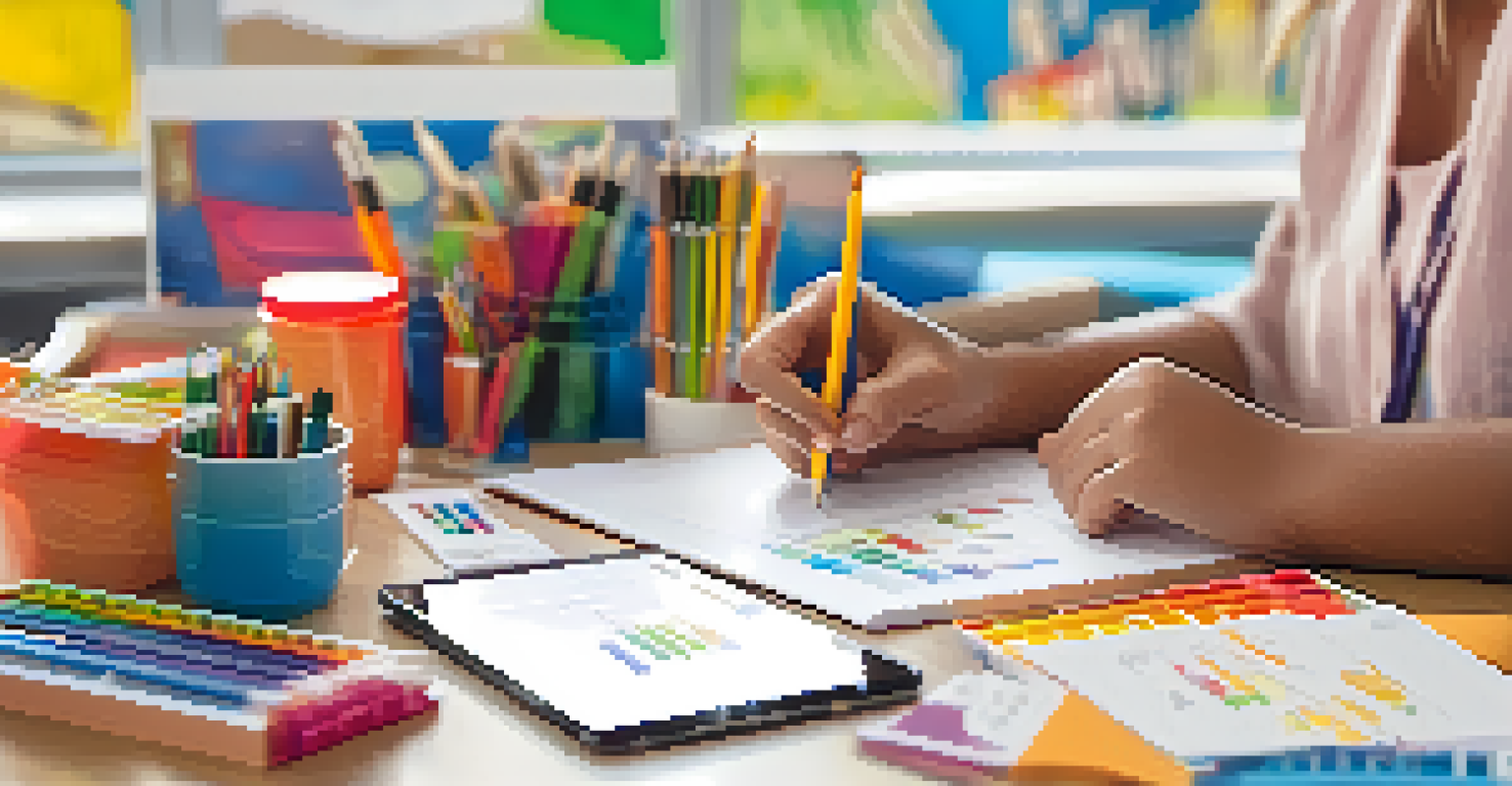Flipped Classroom for Special Education: Tailored Approaches

Understanding the Flipped Classroom Model
The flipped classroom model reverses traditional teaching by delivering instructional content outside of the classroom. This often involves students watching videos or reviewing materials at home, freeing up classroom time for interactive activities. This approach can be particularly beneficial in special education settings where individualized attention is crucial.
The best way to predict the future is to create it.
In a typical flipped classroom, students engage with learning materials at their own pace. For students with special needs, this flexibility allows them to revisit complex topics as often as necessary. This autonomy can boost their confidence and enhance their understanding of the subject matter.
Moreover, the model encourages active participation during class time. Instead of passively listening to lectures, students can engage in hands-on activities, collaborative projects, and discussions, which fosters a deeper learning experience tailored to their unique needs.
Benefits of Flipped Classrooms for Special Needs Students
One of the main benefits of the flipped classroom model for special education is its emphasis on personalized learning. Teachers can provide customized resources that cater to the specific learning styles and needs of each student. This individual attention can make a significant difference in student engagement and retention.

Additionally, flipped classrooms can reduce anxiety for students who may struggle in traditional learning environments. By allowing them to learn at their own pace, students can gain mastery over topics before presenting their knowledge in class. This creates a more supportive atmosphere where they feel comfortable participating.
Flipped Classrooms Enhance Learning
The flipped classroom model personalizes education, allowing students, especially those with special needs, to learn at their own pace and engage actively during class.
Finally, the flipped model promotes collaboration among peers and supports social skills development. By engaging in group activities during class, students can learn from each other and build meaningful relationships, which is essential for their overall growth and development.
Tailoring Content for Diverse Learning Needs
Creating content that is accessible to all students is key in a flipped classroom. This can include using multimedia resources such as videos, infographics, and interactive simulations, which cater to various learning preferences. By diversifying content, teachers can address the unique needs of each student effectively.
Education is the most powerful weapon which you can use to change the world.
Moreover, incorporating assistive technology can further enhance learning experiences. Tools like screen readers, speech-to-text software, and interactive apps can make lessons more engaging and easier to comprehend for students with disabilities. These tools can bridge the gap and ensure that no student is left behind.
It’s also crucial to provide clear instructions and expectations. Using simple language and visual aids can help students with cognitive challenges understand the material. When they know what is expected of them, students can navigate their learning journey with greater confidence.
Creating an Inclusive Classroom Environment
An inclusive classroom environment is essential for the success of the flipped model in special education. This involves fostering a culture of respect and understanding among students, where differences are celebrated. Teachers can promote inclusivity by encouraging collaboration and empathy through group activities.
Additionally, establishing routines can help students feel secure and more engaged. Predictable schedules and clear guidelines create a sense of stability, which is particularly important for students with special needs. When students know what to expect, they are more likely to participate actively in their learning.
Collaboration Boosts Student Success
By promoting group activities and peer interactions, flipped classrooms foster collaboration, helping students develop social skills and build meaningful relationships.
Finally, involving families in the learning process can enhance student outcomes. Providing parents with resources and strategies to support their children's learning at home can make a significant impact. When families are engaged, students are more likely to thrive in an inclusive environment.
Professional Development for Educators
For the successful implementation of a flipped classroom in special education, educators need ongoing professional development. Training programs can equip teachers with the necessary skills and knowledge to create effective flipped lessons. This could include workshops on using technology and understanding diverse learning needs.
Moreover, collaboration among educators can lead to the sharing of best practices and innovative ideas. Teachers can learn from each other's experiences and insights, which can enhance their teaching strategies. This collaborative approach can create a supportive community focused on student success.
Finally, it’s crucial for educators to reflect on their practices regularly. By assessing what works and what doesn’t, teachers can make informed adjustments to their methods. Continuous improvement ensures that the flipped classroom remains effective and aligned with the needs of their students.
Measuring Success in the Flipped Classroom
Measuring the effectiveness of the flipped classroom model is vital to understanding its impact on student learning. Educators can use various assessment methods, such as quizzes, projects, and class participation, to evaluate student progress. This data can offer insights into which strategies are working and which need adjustment.
Additionally, gathering feedback from students can provide valuable information on their experiences. By understanding their perspectives, educators can refine their approaches to better meet their needs. Student feedback can reveal what resources are most helpful and where challenges may lie.
Professional Development is Key
Ongoing training for educators is essential for successfully implementing a flipped classroom, equipping them with the skills to meet diverse learning needs.
Finally, tracking long-term progress is essential. By monitoring students' achievements over time, educators can see the lasting effects of the flipped classroom model. This ongoing assessment allows for a comprehensive view of success, ensuring that all students benefit from the approach.
Challenges and Solutions in Flipped Classrooms
While the flipped classroom model offers many benefits, it also presents challenges, particularly in special education settings. One common hurdle is ensuring that all students have access to technology at home. It's essential for schools to address this gap by providing resources or alternatives for those who may not have reliable internet access.
Another challenge is the potential for students to struggle with self-directed learning. Not all students are equipped with the skills to manage their own learning effectively. Teachers can combat this by providing structured guidance and support, helping students develop essential study habits and time management skills.

Finally, it's crucial to maintain open communication with parents and caregivers. Keeping them informed about the flipped classroom model and their child's progress can foster a supportive learning environment at home. This collaboration can help address any concerns and promote a shared commitment to student success.